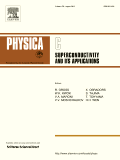
PHYSICA C-SUPERCONDUCTIVITY AND ITS APPLICATIONS
metrics 2024
Illuminating the Future of Energy Engineering
Introduction
PHYSICA C-SUPERCONDUCTIVITY AND ITS APPLICATIONS, published by Elsevier, stands as a pivotal journal in the fields of Condensed Matter Physics, Electrical and Electronic Engineering, and Energy Engineering. With its inception dating back to 1988, the journal has successfully established itself as a key platform for disseminating high-quality research and innovative applications related to superconductivity and its diverse technological implications. Although it currently does not offer open access options, the journal maintains a respectable Q3 quartile ranking in multiple categories as of 2023, indicating its continued relevance and impact within the academic community. Researchers, professionals, and students alike benefit from its insights, as it features peer-reviewed articles covering the latest advancements and theoretical breakthroughs in superconductivity. As it converges towards the end of its operational span in 2024, this journal continues to stimulate valuable dialogue and foster collaborations that push the frontiers of knowledge in this exciting and rapidly evolving domain.
Metrics 2024
 0.34
0.34 1.30
1.30 1.10
1.10 88
88Metrics History
Rank 2024
Scopus
IF (Web Of Science)
JCI (Web Of Science)
Quartile History
Similar Journals

Journal of Superconductivity and Novel Magnetism
Connecting Researchers to the Latest in SuperconductivityJournal of Superconductivity and Novel Magnetism, published by SPRINGER, is a premier venue for research in the dynamic fields of condensed matter physics and materials science. With an ISSN of 1557-1939 and an E-ISSN of 1557-1947, this journal provides an essential platform for disseminating innovative studies examining the complexities of superconductivity and magnetic phenomena. The journal is recognized for its contributions, holding a Q3 quartile ranking in both condensed matter physics and electronic, optical, and magnetic materials as of 2023. With a commitment to rigor and relevance, it features research that breaks new ground in understanding the properties and applications of superconducting materials, aiming to bridge fundamental science with technological advancements. Despite its lack of open access, the journal remains pivotal for researchers, professionals, and students keen to stay abreast of cutting-edge developments in the field, making it an indispensable resource for cultivating knowledge and promoting collaboration.
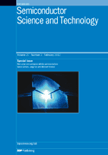
SEMICONDUCTOR SCIENCE AND TECHNOLOGY
Connecting ideas and innovations in semiconductor research.Semiconductor Science and Technology is a pivotal journal in the fields of condensed matter physics, electrical and electronic engineering, and materials science, published by IOP Publishing Ltd. With an ISSN of 0268-1242 and an E-ISSN of 1361-6641, this esteemed journal has been disseminating groundbreaking research since 1986 and is set to continue through 2024. Recognized in the latest categorizations, it holds a notable Q2 ranking in Condensed Matter Physics, Electrical and Electronic Engineering, and Materials Chemistry, alongside a Q3 ranking in Electronic, Optical, and Magnetic Materials, highlighting its significant contribution to the advancement of these disciplines. Although it does not operate under an open access model, the journal provides critical access options for researchers and professionals seeking to foster innovation and collaboration within the semiconductor community. As a vital resource, Semiconductor Science and Technology not only supports the dissemination of high-quality research but also serves as a platform for emerging trends and developments that are shaping the future of semiconductor technology.
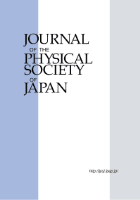
JOURNAL OF THE PHYSICAL SOCIETY OF JAPAN
Advancing the Frontiers of Physics and AstronomyThe JOURNAL OF THE PHYSICAL SOCIETY OF JAPAN, published by the Physical Society of Japan, has been at the forefront of advancing knowledge in the field of Physics and Astronomy since its inception in 1946. With a commendable reputation reflected in its Q2 ranking within its category for 2023, this journal serves as a vital platform for disseminating high-quality research and innovative concepts. Researchers and professionals alike can engage with cutting-edge studies and reviews that span a diverse range of topics pivotal to the physical sciences. Although the journal does not currently operate with an open access model, it maintains a robust impact on the global physics community, evidenced by its placement in the 59th percentile among a competitive pool of 243 journals. With an unwavering commitment to bridging theory and application, the JOURNAL OF THE PHYSICAL SOCIETY OF JAPAN continues to inspire and cultivate scholarly discourse and collaboration across disciplines.
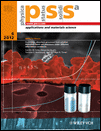
PHYSICA STATUS SOLIDI A-APPLICATIONS AND MATERIALS SCIENCE
Unveiling breakthroughs in engineering and materials.PHYSICA STATUS SOLIDI A-APPLICATIONS AND MATERIALS SCIENCE, published by WILEY-V C H VERLAG GMBH, stands as a prominent journal in the fields of condensed matter physics, materials science, and engineering. With an ISSN of 1862-6300 and E-ISSN 1862-6319, this journal has been actively contributing to scientific discourse since its inception. The journal currently holds a respectable Q2 ranking across several categories including Electrical and Electronic Engineering and Materials Chemistry, demonstrating its significance in advancing research and development within these domains. Although it does not offer open access, the journal ensures high-quality peer-reviewed content that is critical for researchers and professionals aiming to stay at the forefront of materials science innovations. The journal’s convergence years, extending from 2005 to 2024, reflects its ongoing commitment to publishing impactful research. By facilitating discussions on applications and advances in materials science, PHYSICA STATUS SOLIDI A continues to be an essential resource for those striving to contribute to this dynamic field.

Nature Electronics
Leading the Charge in Electronic ResearchNature Electronics is a premier journal in the field of Electrical and Electronic Engineering, published by NATURE PORTFOLIO. Established in 2018 and converging until 2024, it has swiftly positioned itself as a leading platform for groundbreaking research, holding a prestigious Q1 ranking in multiple categories including Electronic, Optical and Magnetic Materials, and Instrumentation according to the latest 2023 evaluations. The journal boasts an impressive Scopus ranking, securing the top position in Instrumentation and showcasing exceptional standings in both Electrical Engineering and Materials Science. With a commitment to disseminating high-quality research, Nature Electronics offers insightful access to the latest innovations and advancements in the electronics domain, making it an essential resource for researchers, professionals, and students alike. Engaging with this journal enables readers to stay at the forefront of technological progress and fosters discussion on the future of electronic materials and devices.
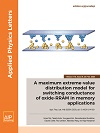
APPLIED PHYSICS LETTERS
Pioneering Research in Applied Physics Excellence.Applied Physics Letters, published by AIP Publishing, is a premier journal dedicated to the rapid dissemination of research in the dynamic field of applied physics. With an ISSN of 0003-6951 and an E-ISSN of 1077-3118, the journal has carved a niche for itself since its inception in 1962, serving as a vital forum for the exchange of innovative ideas and experimental findings. As of 2023, it proudly holds a Q1 ranking in the category of Physics and Astronomy (miscellaneous), standing at rank 11 out of 81 in Scopus, reflecting its influential role in advancing scientific knowledge with an impressive 87th percentile. The journal significantly contributes to the academic community by providing an accessible platform for both groundbreaking theoretical and applied research. Researchers and professionals alike benefit from its rigorous peer-review process and timely publication, fostering collaboration and dialogue among experts in the field. While the journal currently operates under a subscription model, its comprehensive scope encourages submissions covering all aspects of applied physics, making it an essential resource for researchers and students eager to stay at the forefront of this ever-evolving discipline.

npj Quantum Materials
Bridging Theory and Experiment in Quantum Materialsnpj Quantum Materials is a premier, peer-reviewed academic journal published by NATURE PORTFOLIO, focusing on the transformative field of quantum materials. Launched in 2016, this open-access journal aims to bridge the gap between theoretical advances and experimental discoveries, providing a platform for researchers to share cutting-edge findings in condensed matter physics and materials science. With a prestigious Q1 ranking in both Condensed Matter Physics and Electronic, Optical and Magnetic Materials, it stands out in its field, boasting impressive Scopus rankings—#34 out of 434 in Condensed Matter Physics and #39 out of 284 in Electronic, Optical and Magnetic Materials, putting it in the 92nd and 86th percentiles, respectively. The journal emphasizes collaborative efforts that drive innovation and application in quantum technologies, making it an essential resource for researchers, professionals, and students eager to contribute to this rapidly evolving discipline. Accessible to a global audience, npj Quantum Materials continues to shape the future of quantum research through its high-quality publications and community engagement.

Crystals is a premier open-access journal, published by MDPI since 2011, that focuses on the multidisciplinary fields of chemical engineering, condensed matter physics, inorganic chemistry, and materials science. With its E-ISSN 2073-4352, the journal is headquartered in Switzerland, and actively contributes to the global scientific community by facilitating the dissemination of high-quality research. Ranking in the Q2 quartile across multiple categories, including Chemical Engineering (miscellaneous) and Materials Science (miscellaneous) for 2023, Crystals provides a platform for innovative studies that span from fundamental research to practical applications. The journal's commitment to open access ensures that groundbreaking findings are readily available to researchers, professionals, and students alike, fostering an environment of collaboration and knowledge sharing that is essential in advancing the scientific understanding of crystalline materials.
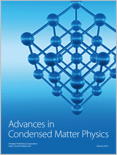
Advances in Condensed Matter Physics
Connecting Researchers with the Latest DiscoveriesAdvances in Condensed Matter Physics is a distinguished journal published by HINDAWI LTD, dedicated to the rapid dissemination of high-quality research in the field of condensed matter physics. Since its inception in 2008, this Open Access journal has facilitated wide accessibility to cutting-edge findings and theoretical advancements, with aims to foster collaboration and innovation within the scientific community. With an ISSN of 1687-8108 and an E-ISSN of 1687-8124, the journal covers an extensive range of topics, from quantum materials to nanotechnology, ensuring relevance and engagement across various sub-disciplines. As a testament to its impact in the field, it is ranked in the Q3 category for 2023 within Scopus and holds a position in the 34th percentile for physics and astronomy. The journal's continuous commitment to publishing significant exploratory research until 2024 makes it a pivotal resource for researchers, professionals, and students eager to stay on the leading edge of condensed matter physics advancements.

Condensed Matter
Pioneering Discoveries in Condensed Matter ScienceCondensed Matter is a leading open-access journal dedicated to the diverse and dynamic field of condensed matter physics, published by MDPI since 2016. With its base in Switzerland, the journal aims to present a platform for researchers and professionals to share innovative findings and advancements in areas such as electronic, optical, and magnetic materials. As of 2023, it is ranked in the Q3 category for both condensed matter physics and electronic, optical, and magnetic materials, a testament to its relevance and growth within the scientific community. Researchers will find valuable insights through its accessible format, fostering collaboration and knowledge dissemination within this interdisciplinary field. With a commitment to enhancing the global dialogue in condensed matter studies, Condensed Matter invites contributions that explore theoretical and experimental approaches, thus pushing the boundaries of understanding in this crucial area of science.